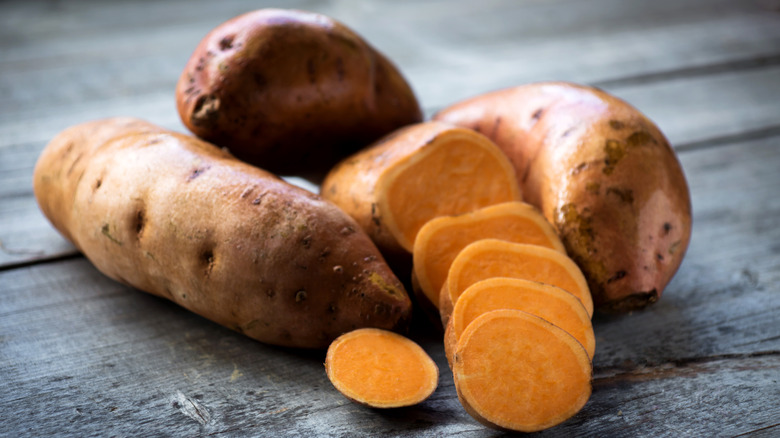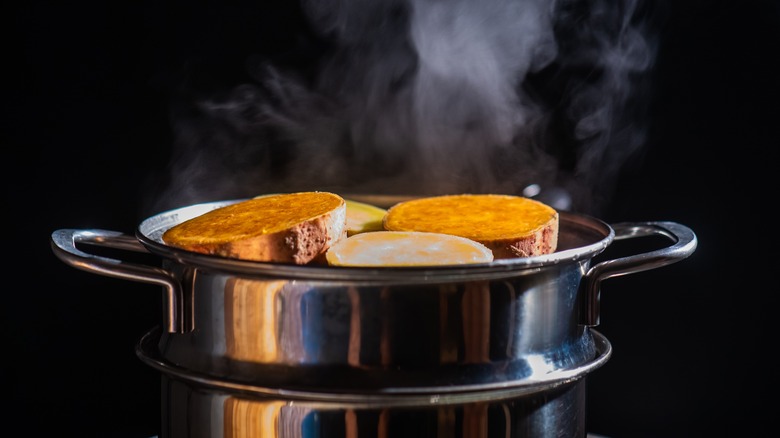The Cooking Mistake You Might Be Making With Sweet Potatoes
Sweet potatoes are full of beneficial nutrients and sugary richness worthy of their name. Their bright orange pulp is an indicator of high amounts of beta carotene which our bodies transform into vitamin A. In addition to vitamin A, sweet potatoes provide a wealth of antioxidants, potassium, iron, vitamin C, and vitamin B6. These nutrients have numerous benefits to our nervous, immune, and digestive systems. While certain cooking methods will maximize their nutritional content, others will significantly reduce their potential. Unfortunately, baking them is a mistake if you want the most nutritious sweet potatoes.
While baking and roasting sweet potatoes is a popular cooking method to upgrade their taste and texture, these methods are the most detrimental to their nutrients. Studies have shown that the high and dry oven temperatures degrade most of their key nutrients. A large part of the antioxidants in sweet potatoes resides in their skin, which baking and roasting partially destroy.
Roasting and baking expose sweet potatoes to high heat for longer periods, causing them to lose the most nutrients. Furthermore, the caramelization sweet potatoes incur during their stint in the oven increases their glycemic index. More than three-quarters of the vitamin A and around two-thirds of the antioxidants in the sweet potato's skin are lost through baking. So while these methods certainly improve sweet potatoes' flavor and create a nice crispy and pillowy textural contrast, it's at the cost of much of their nutrients.
What's the best cooking method?
The best cooking methods to retain the most nutrients are boiling and microwaving. Boiling sweet potatoes reduces the cooking time by at least half when compared to baking or roasting a sweet potato, and microwaving takes as little as eight minutes. Boiled sweet potatoes lose less than 10% of their beta carotene and antioxidant content, which is a vast improvement from the more than 50% loss from baking. Wet cooking methods effectively break down the cell walls in sweet potatoes, providing easier access to their nutrients. Boiled sweet potatoes also contain half the sugars that baked or roasted sweet potatoes contain.
Cutting the sweet potato into cubes or rounds will decrease cooking times even more, resulting in the best nutrient retention. It's also important to keep the peel if you want to reap the benefits of all those antioxidants. Boiling and microwaving sweet potatoes may be the best way to maximize their nutritional value, but these methods also result in a fairly one-dimensional flavor and texture.
Tasting Table provides plenty of ways to add more flavor to sweet potatoes, including seasoning them with complementary flavors. Salt is key to bringing out the underlying taste in any food, but you can also pair sweet potatoes with savory and spicy seasonings like chili powder or tahini for more complexity. Mash boiled sweet potatoes with butter and cinnamon for a spicy, rich pairing and a creamier, fluffier texture.

